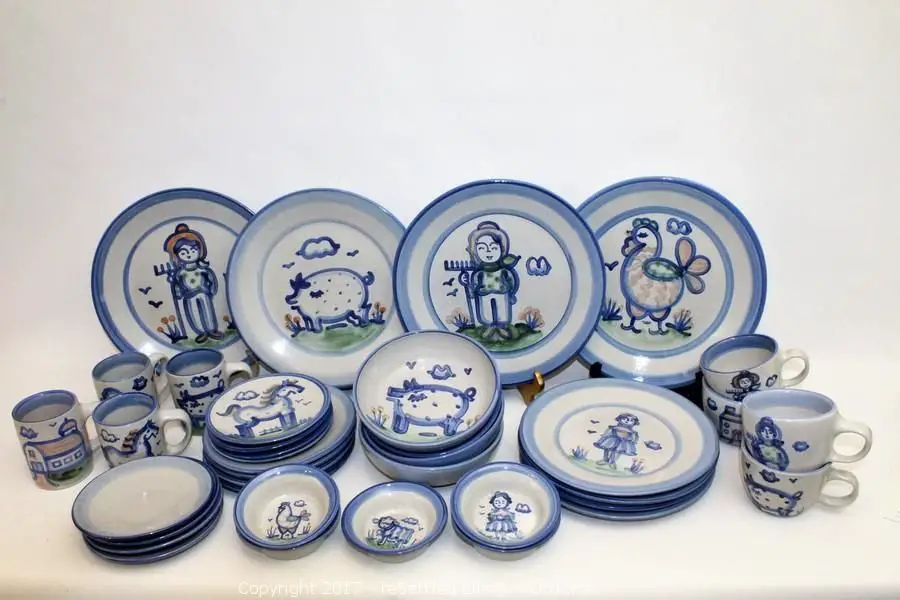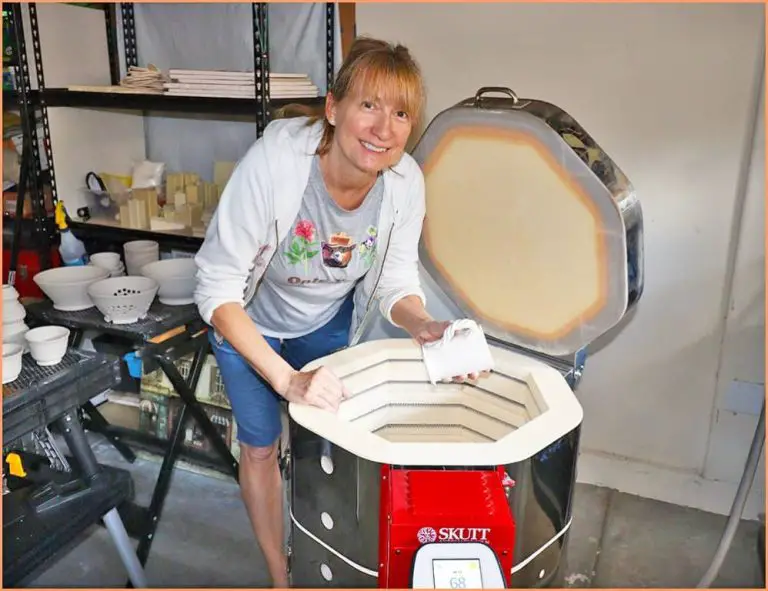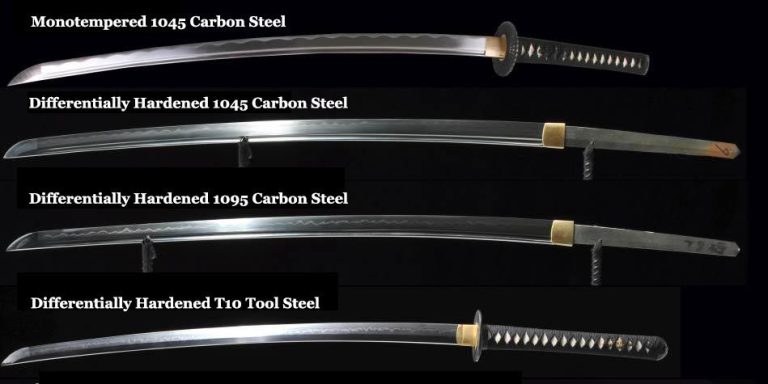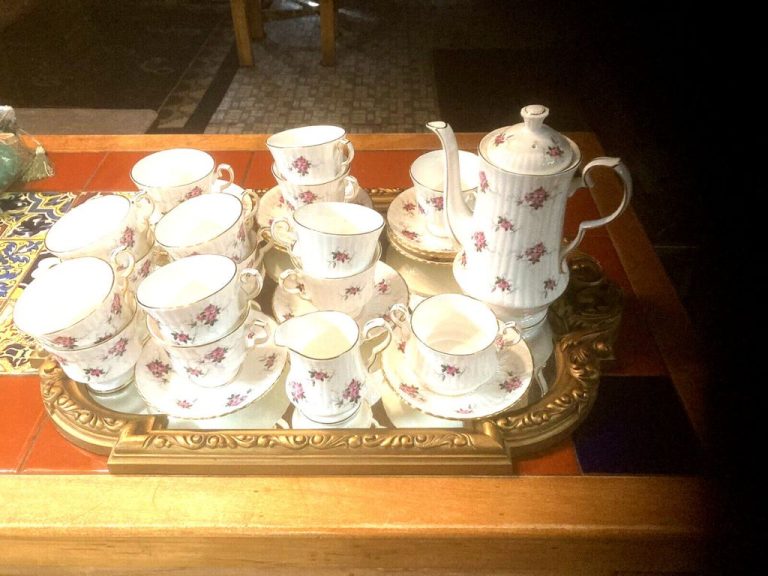What Famous Pottery Is From Cincinnati?
Cincinnati has a rich history as a major hub for pottery manufacturing in the United States. As early as the 1820s, pottery companies began establishing themselves in Cincinnati due to the availability of key raw materials like clay, coal, salt, and lead in the surrounding areas.
Some of the earliest pottery companies in Cincinnati included Abner Lord Culbertson’s Western Stoneware in 1828, James Taylor Jr.’s Fulton Pottery in 1831, and David Liddy’s Stoneware Pottery in 1833. Over the next hundred years, Cincinnati was home to over 200 pottery manufacturers producing a wide variety of utilitarian and art pottery.
Major types of pottery produced in Cincinnati included stoneware, yellowware, Rockingham, whiteware, art pottery, majolica, porcelain, and bricks. Stoneware, yellowware, and Rockingham glazed pottery were very common throughout the 1800s. In the late 1800s and early 1900s, art pottery became popular with companies like Rookwood, Weller, and Owens.
Some key pottery manufacturing time periods in Cincinnati were the 1830s-1840s boom, the Upland South stoneware tradition from 1840-1900, the white granite boom from post-Civil War into the 1890s, and the American art pottery renaissance from 1880-1930.
Rookwood Pottery
Rookwood Pottery was founded in Cincinnati in 1880 by Maria Longworth Nichols. As the founder and driving force behind Rookwood, Nichols wanted to produce high-quality, artistic pottery. She hired talented local artists and chemists to develop innovative glazes and decorative techniques (Just Art Pottery).
Rookwood became known for its distinct matte glazes and Art Pottery styles. Artists experimented with various decorative techniques like cameo carving, incising, and modeling to produce vases, plaques, and architectural ceramics. Some of Rookwood’s most notable artists included Kataro Shirayamadani, Artus Van Briggle, and Sara Sax.
Rookwood made major contributions to American ceramic art. It was the first pottery to successfully mass-produce art pottery, allowing more people to own high-quality decorative pieces. Rookwood also helped establish the American Art Pottery movement and Cincinnati as a center for ceramic innovation (The King’s Fortune). Its artistic ceramics won awards at exhibitions like the Chicago World’s Fair.
Weller Pottery
[1] Weller Pottery was founded in 1872 by Samuel Augustus Weller in Fultonham, Ohio. Known for its art pottery, Weller used innovative techniques like matte glazes, rhyolitic clay bodies, and metallic glazed lusters.
Some of Weller’s most popular glaze styles included their matte finishes like Vellum and Suede. They also became known for their Rococo shapes and naturalistic art. Weller employed skilled designers like Fredrick Hurten Rhead who developed the Dickensware line. Other notable designers included Charley Upjohn, Auguste Delaherche, and Bonnie Nestor.
Weller was one of the first to use a native Ohio clay called rhyolite that became a defining characteristic of their pottery. The pottery was also innovative in its use of air-brushed background shading, Telescope decorations, and Eocean treatments with blended color effects. [2]
Sources:
[1] https://justartpottery.com/pages/about-weller-pottery
[2] https://www.thekingsfortune.com/weller-pottery-history
Owens Pottery
Owens Pottery was founded in 1885 in Zanesville, Ohio by John B. Owens. It became one of the largest potteries in the area during the late 19th and early 20th centuries (from J. B. Owens Pottery Company | Vase with handles). The company began producing art pottery in 1896 with the introduction of the Utopian line, which helped establish its reputation for quality ceramic art (About Owens Pottery).
Owens Pottery was known for producing a wide variety of pottery using local Zanesville clays, including vases, jars, jugs, and artware pieces. Some of their most popular lines were Della Robbia, Zanesville Stoneware, and Rosecraft. By the early 1900s, Owens pottery could be found in homes across America and was sold nationally by retailers like Sears (Owens Pottery History). The company became a leading employer in the Zanesville area and operated for over 100 years before closing in 1954.
KPM Pottery
KPM (Königliche Porzellan-Manufaktur Berlin) was founded in 1763 in Berlin by Frederick the Great. It specialized in porcelain plaques and tableware, often with intricate hand-painted designs. KPM combined Rococo and Neoclassical styles and was known for its fine porcelain and mastery of painting techniques like gilding, along with its technical innovations.
Notable designers for KPM included sculptor Johann Gottfried Schadow and painters like Christian Leberecht Vogel. In the 19th century, KPM produced plaques copying famous paintings like those of Jean-Baptiste Greuze. Their plaque copies were prized by aristocrats and the upper middle class. KPM plaques won awards at world fairs like the 1873 Vienna International Exhibition.
According to the Invaluable article “Guide to KPM Porcelain Marks, History, and Styles,” KPM plaques are “some of the most exquisite porcelain pieces ever produced.” Their technical skill and artistry produced coveted works that now sell for thousands at auctions. You can view examples at auction houses like Invaluable.
Hall China Company
The Hall China Company was founded in 1903 in East Liverpool, Ohio by Robert Hall [1]. The company utilized facilities from the recently dissolved East Liverpool Potteries Company. Hall China produced tableware and dishes for restaurants and households. They were known for their bright-colored floral patterns like “Autumn Leaf” that was first produced in 1933 for the Jewel Tea Company [2].
Hall China supplied dinnerware to restaurants and railroad dining cars. They also produced custom patterns for hotels and other commercial clients. In 1968, Hall China merged with Homer Laughlin China Company, another major producer of dishes and tableware located in Newell, West Virginia. The company continues to manufacture plates, mugs, bowls and other ceramic items under the Hall and Homer Laughlin brands.
Hadley Pottery
Hadley Pottery was founded in 1939 in Cincinnati, Ohio by Mary Alice Hadley. Hadley began creating pottery from her home studio using local clay. She became known for her art pottery style featuring saturated glazes, earth tones, and unique shapes like her famous lug handles 1.

The pottery created by Hadley used a variety of glaze techniques like drags, drips, and sprays layered over stoneware clay bodies. Popular glaze colors were blues, greens, browns and yellows which created unique patterns and textures 2. Each piece was hand thrown on a potter’s wheel then decorated by hand. Products ranged from vases, pitchers and dinnerware to figurines and decorative pieces.
At its peak popularity in the 1950s-60s, Hadley Pottery pieces were sold nationally in department stores and displayed in museums. Hadley’s unique style and innovative glazing techniques influenced many other potters. The company continued after Hadley’s passing in 1965 but ceased production in the early 1970s.
Notable Pottery Artists
Cincinnati has been home to many renowned pottery artists over the years who have made significant contributions to the city’s reputation in the pottery industry. Here are some of the most notable:
Mary Louise McLaughlin – A prominent artist at Rookwood Pottery, McLaughlin was known for her innovative decorative techniques like the “Teco” process which fused minerals to the glaze to create iridescent colors. She also introduced the matte green glaze that became a Rookwood trademark. Her vases and jardinieres with Art Nouveau influences are highly sought after today.
William McDonald – The master sculptor at Rookwood for over 60 years, McDonald helped define Rookwood’s unique style. He was skilled at modeling exotic birds, animals, flowers, and figurines. His most famous works are the sea green glazed elephant handles.
Carl Schmidt – A top sculptor at Owens Pottery, Schmidt specialized in floral motifs. His intricate flower arrangements decorated many Owens vases. He also created realistic modeled birds and animals. Schmidt’s works can be seen at the Cincinnati Art Museum.
Rique Pottery – The signature pottery line at KPM, Rique was known for its innovative Art Deco styling with bold colors and geometric patterns. Rique designers like Elsa Rasmussen and Clyfford Still created unique ceramic pieces far ahead of their time.
Cincinnati Pottery Today
While many of the historic Cincinnati pottery companies have closed over the years, there are still a few modern companies producing high-quality pottery in Cincinnati today. SKT Ceramics makes handmade porcelain tableware and mugs featuring original illustrations. Their products are sold online and in stores around the country. Another active studio is The Pottery Place, which offers pottery classes and events like date nights where couples can create pieces together.
For those interested in viewing historic Cincinnati pottery collections, the Cincinnati Art Museum has an extensive collection of Rookwood Pottery. The Taft Museum of Art also houses a significant collection of ceramic pieces from notable Cincinnati potteries. In addition, the Krohn Conservatory has a permanent collection of Rookwood architectural tiles and urns. Touring these venues allows visitors to see a wide range of the pottery created in Cincinnati over the past century and appreciate the lasting legacy.
Impact and Legacy
Cincinnati has had a lasting impact on American pottery due to the success of its major pottery companies like Rookwood, Weller, Owens, and Hall China. Rookwood Pottery, founded in 1880 by Maria Longworth Nichols, was one of the leading art pottery companies in the United States and helped establish the American Art Pottery movement. Its innovative glazes and decorative styles became hallmarks of American art pottery (The History of Rookwood Pottery – An Extraordinary Tale).
The pottery industry has shaped Cincinnati’s culture and identity. By the early 1900s, Cincinnati was known as the “Pottery Capital of America” due to the number of successful potteries operating there. Pottery production and decoration provided jobs for thousands of citizens. To this day, Cincinnati embraces its pottery heritage through museums like the Cincinnati Art Museum, which has a significant collection of Rookwood Pottery (Rookwood Pottery, Cincinnati, Ohio, 1900-1906).
Cincinnati became a hub for pottery production for several reasons. It had excellent clay resources from the Ohio River region. The city’s accessibility by river, road, and rail enabled potteries to transport raw materials and finished products. Cincinnati also had a skilled labor force of German immigrants familiar with pottery production. The artistic community provided designers and decorators for the potteries. Local wealthy patrons like Maria Longworth Nichols helped finance the founding of major potteries in Cincinnati.






